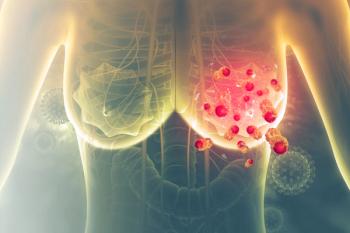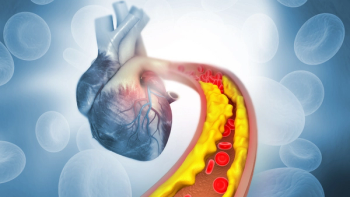
The Future of Periodontal Treatment
Advancements in periodontal disease could make way for expansions in the dental space and other medical fields.
Editor’s note: This interview has been lightly edited for brevity and clarity.
Periodontal disease is widespread in the United States but often receives inadequate attention in the medical field. At the BIO International Convention 2024, Dr. Stella Vnook, Founder and President of Oral Biolife, discussed recent technological advancements in treating periodontitis in both humans and canines. Motivated by six core factors of periodontal disease—prevalence, inadequate solutions, market gaps, health consequences, surgical limitations, and cross-species demands—as well as personal experience, the firm developed a new dental treatment called Ambrilux Dental Gel.
Ambrilux Dental Gel is an injectable hydrogel that combines gelatin methacryloyl (GelMA) with biocompatible piezoelectric fillers made of barium titanate. These fillers produce electrical charges when stimulated by biomechanical vibrations (such as mastication or movement), eliciting a combined antibacterial and bone tissue regenerative effect.
Results from an in vitro study have shown that Ambrilux Dental Gel reduces pathogenic biofilm biomass by approximately 41%, metabolic activity by approximately 75%, and the number of viable cells by approximately 2–3 log compared to hydrogels without BTO fillers. The results also demonstrated that Ambrilux Dental Gel enhances bone marrow stem cell (BMSC) viability and osteogenic differentiation by upregulating genes such as RUNX2, COL1A1, and ALP. The hydrogel is light-curable, conforms to pocket spaces, and is biocompatible.1
Pharmaceutical Executive: Can you tell us about Oral Biolife?
Dr. Vnook: This is such a special company to me. When I needed a dental implant, I couldn’t get anything, even bone factors, to work. I started learning about periodontal disease, what it means for making implants, and what existed in the market at the time. What surprised me was how limited the field was. Having had a career in pharma spanning 25 years, I saw a lot of innovation, such as cell therapy. However, other than a few types of bone grafts, periodontal dentistry and implantology care were largely dependent on the art and skill of the individual dentist or dental surgeon.
So, what do you do as a patient needing care? I’m not going to walk around with a hole in my tooth. Yes, my gums need treatment, but what treatment? My periodontist recommended Avastin, which is an antibacterial, but that didn’t help much. Thinking about the problem in clinical terms, we wanted something that would regenerate bone. It had to be noninvasive for people with periodontal disease and similar issues. I asked myself, “How do you make this procedure easier?”
I discovered that the Temple School of Dentistry had the technology to combine piezoelectric ceramic material with GelMA. Two different models were studied in rodents with phenomenal data. Their technology was a gel-like substance, similar in appearance to a tooth whitening syringe. For patients with periodontal disease, it would be administered inside the pocket after root scaling.
Pharmaceutical Executive: Can you elaborate on how Ambrilux Dental Gel works to help patients with periodontal disease?
Dr. Vnook: Ambrilux Dental Gel stimulates osteoblasts, which form new bone and tissue. Logically, it makes all the sense in the world. With data confirming its efficacy, we conducted additional studies and are pursuing a full indication in animal health. In the meantime, we were also permitted to provide it to veterinarians to try it out. We have been pleasantly surprised with the results thus far. When veterinarians gave it to dogs, we saw bone regeneration within 30 days. I told my team, once we start human clinical studies, I'll be the first patient.
We talk to dentists and people with periodontal disease equally. Yes, there are other treatments like Avastin, but they do not seem to have the efficacy that both patients and clinicians desire. The piezo material in Ambrilux Dental Gel provides mechanical stimulation of osteoblasts every time we chew or talk. The beauty of that is, once we put it in and cure it under a light, it stays in place and continues to stimulate the formation of new tissue.
Patients can come back in 30 days for a reapplication, but that is not something they will continuously need to do unless they have a genetic condition that enhances the severity of their periodontal disease. Theoretically, after the first two treatments, the bone will regrow, and the patient should not need further reapplication. However, this is something we need to confirm through further studies.
Pharmaceutical Executive: Do you see a future for this technology in other healthcare fields as well?
Dr. Vnook: Absolutely. We have additional goals in the dental field, but we also have many orthopedic experts saying there is huge potential for this technology in lumbar applications. When patients undergo hip or shoulder surgeries, we can enhance healing with our tissue regeneration piezo material. We are excited about our technology's potential beyond dental applications.
References
Roldan L, Montoya C, Solanki V, et al. A Novel Injectable Piezoelectric Hydrogel for Periodontal Disease Treatment. ACS Appl Mater Interfaces. 2023;15(37):43441-43454. doi:10.1021/acsami.3c08336
Newsletter
Lead with insight with the Pharmaceutical Executive newsletter, featuring strategic analysis, leadership trends, and market intelligence for biopharma decision-makers.





